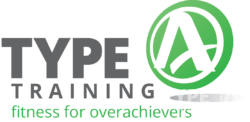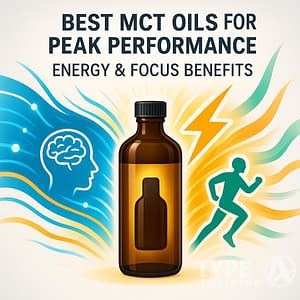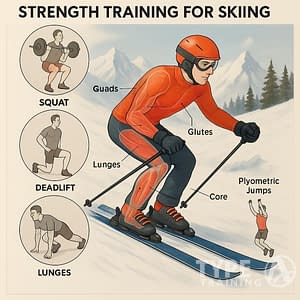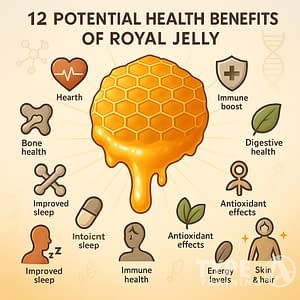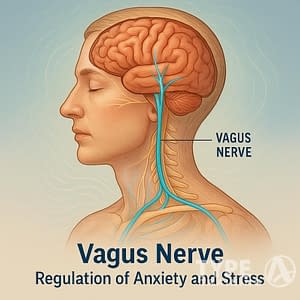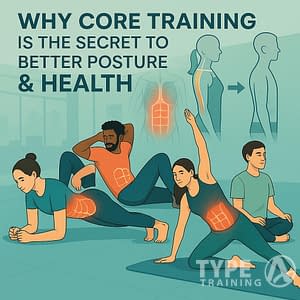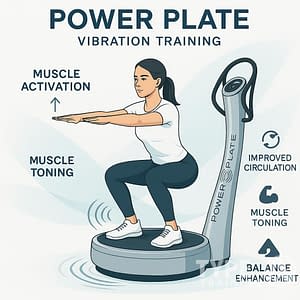Choosing between Power Plate vs Traditional Workouts training and traditional workouts really comes down to your goals, lifestyle, and what you actually enjoy. Power Plate vs Traditional Workouts uses whole-body vibrations to get your muscles firing quickly, sometimes in just a few minutes. Traditional workouts stick with tried-and-true methods like cardio, lifting, or bodyweight moves. Understanding the differences in effectiveness and results between Power Plate vs Traditional Workouts can help you make an informed choice.
If you want efficiency and low-impact training, Power Plate can give you faster muscle activation. But if you care more about versatility and proven long-term results, traditional workouts still seem like the safer bet.
When considering fitness options, comparing Power Plate vs Traditional Workouts can reveal unique benefits and potential drawbacks for each method.
The choice between Power Plate vs Traditional Workouts can be influenced by personal preferences and fitness goals. Many individuals find success by incorporating elements from both approaches.
Popular posts:

You don’t have to pick just one style. Plenty of folks mix both to balance strength, endurance, and recovery.
Power Plate can boost flexibility, circulation, and core stability. Traditional training builds endurance, strength, and skill through more varied movements.
As you explore the benefits of Power Plate vs Traditional Workouts, it’s crucial to consider which method aligns best with your fitness journey.
Key Takeaways
- Power Plate offers efficient, low-impact muscle activation
- Traditional workouts provide proven strength and endurance benefits
- The best option depends on your goals and how you want to train
Understanding Power Plate vs Traditional Workouts

You can approach fitness in all sorts of ways, depending on your goals, time, and preferences.
Some methods use technology to stimulate your muscles, while others stick to familiar forms of exercise like weights, cardio, or bodyweight training.
What Is a Power Plate?
A Power Plate is a vibration plate that ramps up exercise by triggering muscle contractions. You stand, sit, or move on a platform that vibrates at high speeds.
These vibrations force your muscles to contract dozens of times per second, so you end up using more muscle fibers than you might with regular exercise.
You can do squats, push-ups, or stretches on the platform. The vibrations make each move feel tougher, so even quick sessions can be surprisingly intense.
A lot of people use it for warming up, cooling down, or recovery after workouts. It’s become popular in gyms, physical therapy clinics, and even at home.
While it doesn’t replace everything, it can fit alongside other workouts as a time-efficient way to hit multiple muscle groups.
How Do Vibration Plates Work?
Vibration plates like the Power Plate use whole-body vibration (WBV) technology. The platform moves rapidly in short bursts, either up and down or sometimes in different directions.
This motion forces your muscles to react instantly to keep your balance and stability. These reflexive contractions can happen up to 50 times a second.
Because your body is constantly adjusting, you end up working more muscle fibers than just standing on solid ground.
You can make things harder by adding moves like lunges, planks, or resistance work. The vibrations act like an extra layer of resistance, so even simple exercises get a lot tougher.
Some studies say WBV might help with circulation, mobility, and recovery, which is pretty appealing if you’re looking beyond classic strength training. Still, results can really depend on how often and how long you use the machine.
What Are Traditional Workouts?
Traditional workouts cover the basics: weightlifting, running, cycling, swimming, yoga, and bodyweight exercises. These rely on you actively contracting your muscles, not on an outside machine.
For example:
- Strength training builds muscle and bone density through resistance.
- Cardio exercise improves heart and lung function.
- Flexibility training supports mobility and reduces stiffness.
Traditional workouts give you more control over intensity, variety, and how you progress. You can change weights, distance, or speed to fit your fitness level.
They also work your heart and coordination in ways vibration platforms don’t quite match.
Since they’re so well-studied and widely practiced, traditional methods are still the backbone of most exercise routines. You can tailor them to fat loss, endurance, strength, or just overall health—whatever you’re after.
Comparative Analysis: Power Plate vs Traditional Workouts
Using a Power Plate vs Traditional Workouts can help you build muscle strength, support joint mobility, improve circulation, and recover faster after exercise.
The vibration platform stimulates your muscles and nervous system in ways that traditional workouts may not.
Muscle Strength and Toning
The advantages of Power Plate vs Traditional Workouts highlight the unique benefits of each style, making it important to assess your personal needs.
When you stand, squat, or move on the Power Plate, the platform sends rapid vibrations through your body. Your muscles contract and relax over and over, much faster than with standard exercise.
That extra activation means you’re working more muscle fibers in less time. Even basic moves like lunges or planks get way more challenging because your body’s fighting to stay stable.
When evaluating Power Plate vs Traditional Workouts, consider how each method can contribute to your overall fitness objectives.
Power Plate training can help with muscle tone too. It targets both big muscle groups and smaller stabilizers, which might lead to better definition and balance.
If you’re short on time, this efficiency makes it easier to squeeze in strength training.
Flexibility and Range of Motion
The vibrations from the Power Plate can loosen up tight muscles and joints. As your muscles contract and relax quickly, they become more responsive to stretching.
This can mean better flexibility and a wider range of motion. Moves like deep squats or overhead reaches might feel easier after using the platform.
If you struggle with stiffness from sitting too much or old injuries, this can really help.
Adding stretching or mobility drills on the Power Plate can boost these effects. The gentle vibrations help your muscles warm up quickly, so it’s handy before or after a workout.
Improved Circulation and Blood Flow
Whole-body vibration ramps up blood flow all over. The constant muscle contractions work almost like a pump, moving blood and oxygen to your muscles.
You might feel more energized and less wiped out during and after exercise.
Better circulation also supports your cardiovascular system. Using the Power Plate regularly can lower muscle tightness and help your muscles get nutrients faster.
Some studies even say it might support bone health by encouraging more load-bearing activity.
If you have poor circulation or spend long hours sitting, this effect could help reduce swelling and make you feel more comfortable. Plus, the low-impact style works for a lot of fitness levels.
Enhanced Recovery and Reduced Soreness
Using the Power Plate after a workout might help you bounce back faster. The vibrations boost blood flow, flushing out waste products like lactic acid from your muscles.
This can cut down on the soreness you get after tough sessions.
You can also use the platform for massage and stretching. By standing, sitting, or pressing specific muscles on the machine, you can target tight spots and ease tension.
Whether you’re an athlete or just working out casually, this recovery boost means you can get back to training with less discomfort.
Advantages of Traditional Workouts
Traditional workouts give you a structured way to build muscle strength, improve endurance, and support balance.
You can tweak exercises to match your own goals, whether you want to boost heart health, build functional strength, or just shake up your routine.
Building Endurance and Cardiovascular Health
Traditional workouts usually include steady-state cardio like running, cycling, or rowing. These strengthen your heart and lungs, so your body uses oxygen better.
Over time, you’ll find you can do more with less effort.
Strength training also helps with endurance by making your muscles more efficient. Moves like squats and lunges build lower-body strength, making everyday stuff—stairs, groceries, you name it—way easier.
Stronger muscles take pressure off your joints and help you stay energized during longer activities.
Mixing resistance training with cardio can be even better. A weekly routine that combines weights and aerobic exercise boosts both your heart health and muscle conditioning.
This balanced approach helps you manage weight, keep your
Functional Strength and Coordination
Traditional strength training uses free weights, machines, and bodyweight moves to target specific muscle groups.
These methods build muscle and support good posture and stability in daily life.
When you do compound lifts like bench presses, deadlifts, or squats, you also train your body to coordinate multiple muscle groups at once.
That means better balance and control, which can help prevent falls and injuries.
Even isolated moves like bicep curls or leg extensions matter. They let you fix muscle imbalances and strengthen weaker areas that support bigger movements.
Combining both compound and isolated exercises helps you train for both power and precision.
Customizability and Versatility
Traditional workouts are super flexible. You can use free weights, machines, bands, or just your bodyweight—whatever suits your goals and comfort zone.
If you want muscle growth, you can follow a hypertrophy program and keep adding weight. If balance and mobility matter more, you can focus on stability exercises or lighter resistance.
You get to control how hard you push yourself. Change sets, reps, or weight as you go.
This level of customization keeps workouts challenging and effective for building strength, endurance, and overall health.
Comparing Power Plate and Traditional Workouts
Ultimately, comparing Power Plate vs Traditional Workouts will equip you with the knowledge to choose the right path for your fitness journey.
Power Plate uses whole-body vibration to get your muscles working more in less time.
Traditional workouts rely on voluntary movement and outside resistance. Each style affects weight loss, balance, and accessibility in its own way.
Effectiveness for Weight Loss
Weight loss comes down to burning more calories than you eat—exercise and diet together. Traditional workouts like running, cycling, or strength training tend to burn more calories per session than standing or moving on a vibration plate.
Still, Power Plate can make short workouts more efficient. The vibrations force your muscles to contract over and over, so moves like squats, planks, or push-ups get more intense.
That can boost energy use compared to doing the same moves on the floor.
If you want steady calorie burn, cardio-based traditional workouts are usually the way to go. But if you want to add intensity to shorter sessions, mixing vibration training with bodyweight or resistance moves might help with weight management.
| Method | Typical Calorie Burn (30 min)* | Key Benefit |
|---|---|---|
| Traditional cardio (running, cycling) | 250–400+ | High calorie burn |
| Strength training | 150–250 | Builds muscle mass |
| Power Plate with bodyweight moves | 120–200 | Time efficiency, muscle activation |
*Numbers vary by body weight and workout intensity.
Impact on Balance and Stability
Traditional strength and mobility training helps with balance through exercises like lunges, single-leg stands, or core workouts. These moves strengthen the muscles that support your joints.
Power Plate training adds a twist by challenging your balance with constant vibrations. When you hold a squat or plank, the platform makes your body adjust in small ways.
This can boost proprioception—basically, your sense of where your body is in space. It’s a different kind of challenge compared to steady, controlled movements.
Older adults or folks recovering from injury might like this approach because it offers low-impact balance work. Still, doing traditional exercises that mimic daily activities remains key for long-term stability and fall prevention.
Suitability for Different Fitness Levels
Traditional workouts scale up or down pretty easily. You can change the weight, speed, or intensity to fit your needs.
This makes them accessible for almost anyone, from beginners to advanced athletes.
Power Plate is flexible too, but it works differently. Beginners might just stand or stretch on the platform.
If you’re more advanced, you can do push-ups, lunges, or even plyometric moves right on the vibrating surface.
The low-impact nature of vibration plates appeals to those with joint pain or limited mobility. On the flip side, elite athletes use them to activate muscles quickly before or after training.
You can adjust the platform to your fitness level, but it probably shouldn’t replace traditional exercise completely.
Choosing the Right Approach for Your Goals
Choosing between Power Plate training and traditional workouts really depends on your fitness level, health, and what results you want. Each method has something unique to offer, but there are limits you’ll want to think about before you pick one or try both.
In summary, weighing Power Plate vs Traditional Workouts can greatly aid in determining the best approach for your specific fitness needs.
Assessing Personal Fitness Needs
Start by figuring out what you actually want. If you’re aiming to build muscle mass, traditional strength training with weights is probably your best bet since you can keep increasing the challenge.
If your focus is on balance, circulation, or joint stability, Power Plate training might help. The vibrations stimulate your muscles with less strain, which is great for older adults or those coming back from injury.
Consider how much time and energy you have. Power Plate sessions are often shorter but still effective for working on mobility and your core.
Traditional workouts usually take more time but give you more control over how hard you push yourself.
Ask yourself:
- Do you want to get stronger or just keep moving well?
- How much time can you really give this each week?
- Are you dealing with any health conditions or injuries?
Your answers will help you pick what fits your life.
Potential Risks and Safety Considerations
Every approach has risks if you don’t use it right. With traditional workouts, overuse injuries, poor form, and lifting too heavy too soon are the big ones.
These issues can mean joint pain, muscle strain, or worse if you’re not careful.
Power Plate training isn’t risk-free either. If you have cardiovascular disease, recent surgery, or joint replacements, the vibrations might not be safe.
Standing wrong or using it incorrectly can lead to discomfort or dizziness.
To keep things safe:
- Learn proper technique before you start.
- Get some professional advice if you’re new to either method.
- Start slow and ramp up gradually.
Don’t forget—safety should matter just as much as your goals.
Integrating Both Methods for Optimal Results
You don’t have to stick to just one thing. Lots of people get the best of both worlds by mixing Power Plate training with traditional workouts.
Maybe you use the Power Plate for warm-ups, balance drills, or recovery, and then grab some weights for building strength and muscle.
This combo lets you enjoy the efficiency of vibration training and the tried-and-true results of resistance exercises.
Here’s a sample weekly plan:
| Day | Focus | Method |
|---|---|---|
| Mon | Strength | Traditional weights |
| Wed | Balance & Core | Power Plate |
| Fri | Strength | Traditional weights |
| Sat | Recovery & Mobility | Power Plate |
Mixing both keeps your routine balanced—strength, endurance, flexibility, and recovery—without pushing your body too hard.
Frequently Asked Questions
Power Plate training uses whole-body vibration to fire up your muscles in a different way than regular exercise. It works for strength, balance, and flexibility, but you’ll want to keep an eye on health and fitness level before jumping in.
For those considering their options, Power Plate vs Traditional Workouts presents unique advantages that cater to diverse fitness levels and goals.
What are the proven benefits of using a vibration plate for workouts?
With regular use, you can see gains in muscle strength, circulation, balance, and flexibility. The vibrations make your muscles contract many times per second, so even simple moves feel harder.
The mix of Power Plate vs Traditional Workouts can yield impressive results when done appropriately.
Research points to benefits for bone density and recovery when you use it safely.
Are there any risks associated with using vibration machines for exercise?
Yes, there are risks—especially if you have heart disease, joint problems, or you’re pregnant. Using the machine at high intensity or for too long can also cause strain.
Definitely talk to your healthcare provider before starting if you’ve got medical concerns.
What types of exercises can be performed on a vibration plate?
You can do squats, planks, push-ups, lunges, and stretches right on the platform. Some folks add light weights or resistance bands for more variety.
It works for both static holds and dynamic moves.
What results can typically be expected from using a vibration plate over time?
If you stick with it, you might notice better strength, balance, and flexibility. Some people say recovery is faster and circulation improves, too.
Results really depend on how often you use the plate, the intensity, and whether you mix it with other exercise.
How do vibration plates compare to traditional workouts in terms of effectiveness?
Vibration plates can make workouts more efficient by getting your muscles to work harder in less time. Still, they don’t replace traditional strength training, cardio, or functional movement.
For optimal results, consider integrating both Power Plate vs Traditional Workouts into your routine.
Honestly, you’ll probably see the best results if you combine both.
Can using a vibration plate have negative effects on brain health?
There’s not a ton of research on what happens to the brain over the long haul. A few studies point out that people exposed to heavy vibrations at work—think industrial settings—might see some changes in their nervous system.
But that’s a far cry from what you get during a typical fitness session. If you use the machine the right way and don’t overdo it, the risks seem pretty low.
